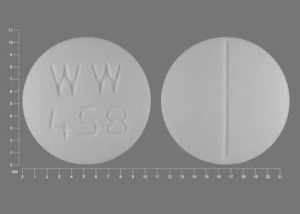Phenobarbital Interactions
There are 806 drugs known to interact with phenobarbital, along with 15 disease interactions, and 2 alcohol/food interactions. Of the total drug interactions, 242 are major, 517 are moderate, and 47 are minor.
- View all 806 medications that may interact with phenobarbital
- View phenobarbital alcohol/food interactions (2)
- View phenobarbital disease interactions (15)
Most frequently checked interactions
View interaction reports for phenobarbital and the medicines listed below.
- Ativan (lorazepam)
- Ativan (lorazepam)
- Benadryl (diphenhydramine)
- Benadryl (diphenhydramine)
- Dilantin (phenytoin)
- Dilantin (phenytoin)
- Keppra (levetiracetam)
- Keppra (levetiracetam)
- Klonopin (clonazepam)
- Klonopin (clonazepam)
- Lamictal (lamotrigine)
- Lamictal (lamotrigine)
- MiraLAX (polyethylene glycol 3350)
- MiraLAX (polyethylene glycol 3350)
- Paracetamol (acetaminophen)
- Paracetamol (acetaminophen)
- Topamax (topiramate)
- Topamax (topiramate)
- Tylenol (acetaminophen)
- Tylenol (acetaminophen)
- Valium (diazepam)
- Valium (diazepam)
- Vimpat (lacosamide)
- Vimpat (lacosamide)
- Vitamin C (ascorbic acid)
- Vitamin C (ascorbic acid)
- Vitamin D3 (cholecalciferol)
- Vitamin D3 (cholecalciferol)
- Xanax (alprazolam)
- Xanax (alprazolam)
Phenobarbital alcohol/food interactions
There are 2 alcohol/food interactions with phenobarbital.
Phenobarbital disease interactions
There are 15 disease interactions with phenobarbital which include:
- acute alcohol intoxication
- drug dependence
- liver disease
- porphyria
- rash
- respiratory depression
- cardiovascular
- prolonged hypotension
- renal dysfunction
- suicidal tendency
- adrenal insufficiency
- depression
- hematologic toxicity
- osteomalacia
- paradoxical reactions
More about phenobarbital
- phenobarbital consumer information
- Compare alternatives
- Pricing & coupons
- Reviews (36)
- Drug images
- Side effects
- Dosage information
- During pregnancy
- Support group
- Drug class: barbiturate anticonvulsants
- Breastfeeding
- En español
Related treatment guides
Drug Interaction Classification
| Highly clinically significant. Avoid combinations; the risk of the interaction outweighs the benefit. | |
| Moderately clinically significant. Usually avoid combinations; use it only under special circumstances. | |
| Minimally clinically significant. Minimize risk; assess risk and consider an alternative drug, take steps to circumvent the interaction risk and/or institute a monitoring plan. | |
| No interaction information available. |
See also:
Lamictal
Lamictal is an anti-epileptic medication used treat seizures in adults and children over 2 years ...
Carbamazepine
Carbamazepine is used to treat epileptic seizures and nerve pain such as trigeminal neuralgia ...
Botox
Botox is used for cosmetic purposes and to treat overactive bladder symptoms, urinary incontinence ...
Levetiracetam
Levetiracetam is used for bipolar disorder, epilepsy, hyperekplexia, neuralgia, new daily ...
Lyrica
Lyrica is used to control seizures, treat nerve pain and fibromyalgia. Learn about side effects ...
Topiramate
Learn about topiramate, an anticonvulsant used for seizures, migraine prevention, and weight loss ...
Diazepam
Diazepam is used to treat anxiety disorders, alcohol withdrawal symptoms, or muscle spasms. Learn ...
Lorazepam
Lorazepam is in a group of drugs called benzodiazepines and is used to treat anxiety disorders ...
Pregabalin
Pregabalin may be used to treat certain types of pain and used in combination with other ...
Lamotrigine
Lamotrigine is used for anxiety, bipolar disorder, borderline personality disorder, cyclothymic ...
Further information
Always consult your healthcare provider to ensure the information displayed on this page applies to your personal circumstances.


